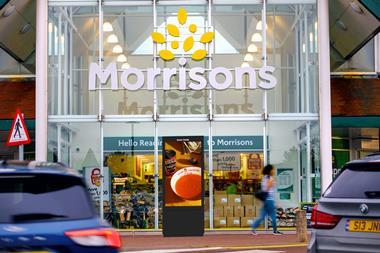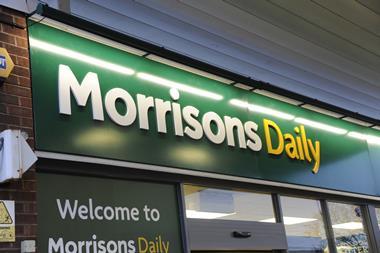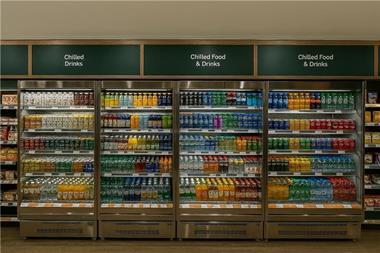When you buy a business, you’ve got to take the people along with you, argues Steve Crabb, who believes the writing is on the wall for the Morrisons/Safeway marriage of opposites
Seasoned observers of the HR scene have been watching the Morrisons/Safeway saga with a mixture of emotions – sorrow and pity being pretty high on the list.
After all, few people take any pleasure from seeing once-mighty brands reduced to this level. But few of us have been experiencing any surprise.
Mergers and acquisitions are risky businesses at the best of times, but when you try to nail together two companies that are as far apart culturally as Safeway and Morrisons, you are simply asking for trouble.
It must be remembered that Safeway had built up a formidable reputation for the quality of its HR team and its people management systems and policies in the years before the takeover.
They turned up on the shortlist of practically every award going for best practice in HR (including IGD’s, by the way, which is closing on July 15 – see www.igd.com for details), and rightly so.
Their success in retaining key personnel once the sale was confirmed, and actually beating their own performance targets in the process, was a case study in how to use every management tool at your disposal to take your people with you.
Morrisons, on the other hand, still uses the term ‘personnel department’ and, if you want to see how welcoming their employer brand is, try checking out vacancies on their web site – you have to sign a disclaimer just to get into the site.
If the Sunday Telegraph’s report is accurate, the writing was on the wall for this marriage of opposites from the beginning.
Sir Ken Morrison addressed Safeway staff by live video-link and announced that Yorkshire people were superior, and that from now on everything would be done the Morrisons way. Shortly after that, the much-admired Safeway HR team were out of the business.
This isn’t special pleading for human resources as a function, simply a recognition that when you buy a business, you’ve got to take the people along with you.
All the buildings, the equipment and the patents you buy are pretty soon going to be worthless if you lose the people who made them valuable in the first place.
Or, maybe worse in the grocery industry, they stay at their posts radiating unhappiness, so the customers take their business elsewhere.
There is good practice around: look at Asda, for example, where board members make a point of visiting newly acquired stores in person at the earliest opportunity.
Estimates of the proportion of mergers and acquisitions which fail to meet their goals vary enormously, but it seems safe to say it’s at least as high as 50% (based on research by stress experts Sue Cartwright and Cary Cooper) and could be as high as 75%. And many of those fail because not enough concentration is given to cultural compatability in the first place, and to the simple steps needed to communicate with employees about what’s going to happen, especially over issues such as their pensions.
Seasoned observers of the HR scene have been watching the Morrisons/Safeway saga with a mixture of emotions – sorrow and pity being pretty high on the list.
After all, few people take any pleasure from seeing once-mighty brands reduced to this level. But few of us have been experiencing any surprise.
Mergers and acquisitions are risky businesses at the best of times, but when you try to nail together two companies that are as far apart culturally as Safeway and Morrisons, you are simply asking for trouble.
It must be remembered that Safeway had built up a formidable reputation for the quality of its HR team and its people management systems and policies in the years before the takeover.
They turned up on the shortlist of practically every award going for best practice in HR (including IGD’s, by the way, which is closing on July 15 – see www.igd.com for details), and rightly so.
Their success in retaining key personnel once the sale was confirmed, and actually beating their own performance targets in the process, was a case study in how to use every management tool at your disposal to take your people with you.
Morrisons, on the other hand, still uses the term ‘personnel department’ and, if you want to see how welcoming their employer brand is, try checking out vacancies on their web site – you have to sign a disclaimer just to get into the site.
If the Sunday Telegraph’s report is accurate, the writing was on the wall for this marriage of opposites from the beginning.
Sir Ken Morrison addressed Safeway staff by live video-link and announced that Yorkshire people were superior, and that from now on everything would be done the Morrisons way. Shortly after that, the much-admired Safeway HR team were out of the business.
This isn’t special pleading for human resources as a function, simply a recognition that when you buy a business, you’ve got to take the people along with you.
All the buildings, the equipment and the patents you buy are pretty soon going to be worthless if you lose the people who made them valuable in the first place.
Or, maybe worse in the grocery industry, they stay at their posts radiating unhappiness, so the customers take their business elsewhere.
There is good practice around: look at Asda, for example, where board members make a point of visiting newly acquired stores in person at the earliest opportunity.
Estimates of the proportion of mergers and acquisitions which fail to meet their goals vary enormously, but it seems safe to say it’s at least as high as 50% (based on research by stress experts Sue Cartwright and Cary Cooper) and could be as high as 75%. And many of those fail because not enough concentration is given to cultural compatability in the first place, and to the simple steps needed to communicate with employees about what’s going to happen, especially over issues such as their pensions.


















No comments yet